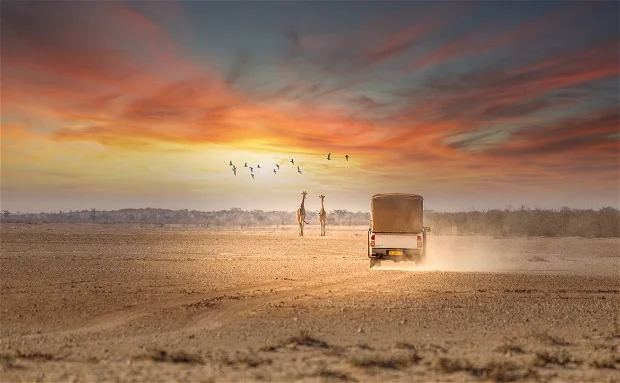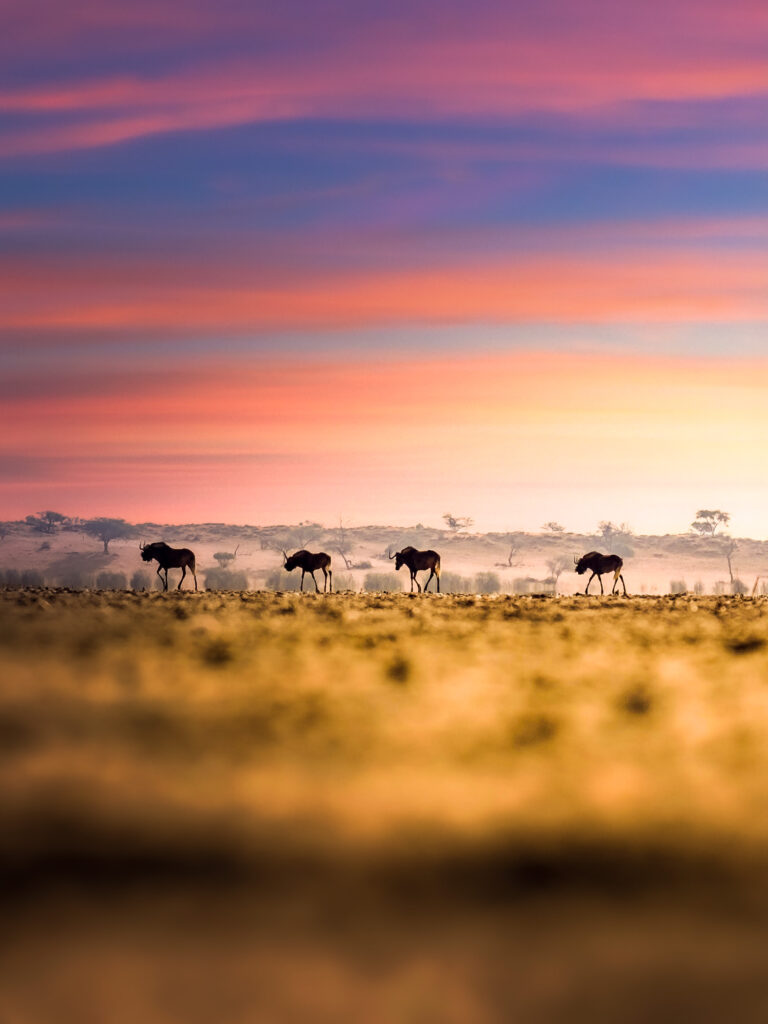Discovering the wonders of Namibia on a guided safari is an unforgettable experience that combines awe-inspiring landscapes with the thrill of spotting Africa’s iconic wildlife. Highlights include the towering red dunes of Sossusvlei, the salt pans of Etosha, and the stunning Fish River Canyon. The spectacular scenery throughout Namibia offers breathtaking views and unforgettable sights. A guided safari offers the unique opportunity to explore Namibia’s vast wilderness with the expertise and knowledge of a local guide. Here’s everything you need to know to make the most of your guided safari adventure in Namibia.

Why Choose a Guided Safari in Namibia?
Safety and Expertise
Embarking on a safari in unfamiliar terrain can be challenging, especially in a country as vast and remote as Namibia. Guided safaris provide a sense of security and expertise that allows travelers to fully immerse themselves in the experience without worrying about navigating gravel roads or missing key sites. Professional guides are trained to handle unexpected situations, from changing weather conditions to wildlife encounters, making it a safer and more enriching experience for travelers.
Access to Exclusive Areas
Guided safaris can offer exclusive access to private reserves, restricted areas, and hidden trails that self-drive tourists may not be able to reach. These off-the-beaten-path locations often offer incredible wildlife encounters and a more intimate experience of Namibia’s natural beauty.
Stress-Free Logistics
A guided safari means that all the logistical details are taken care of. Transportation, permits, accommodation arrangements, and often even meals are organized in advance. This leaves you free to relax and enjoy your surroundings while your guide handles the specifics.
Cultural Insights
Guides often come from other countries in the region and have a deep understanding of the landscape, wildlife, and culture. They can share stories, local customs, and knowledge about the flora and fauna, making the experience both educational and immersive.
When to Go on a Guided Safari in Namibia
Best Time of Year
The best time to go on a guided safari in Namibia is typically during the dry season, from May to October. During these months, animals gather around water sources, making them easier to spot. The cooler temperatures and clear skies also make for comfortable game drives and spectacular starry nights.
Seasonal Highlights
While the dry season is popular, each season in Namibia offers something unique. The rainy season, from November to April, is brief but significantly impacts wildlife activity and accessibility within the national parks. During this period, animals are less likely to visit waterholes due to the availability of water in other areas, presenting unique challenges for wildlife viewing. The wet season transforms the landscape into a green paradise and attracts migratory birds, making it ideal for birdwatching enthusiasts. However, be prepared for occasional rain showers and high temperatures.
Weather Considerations
Namibia’s climate can vary significantly, with scorching days and chilly nights, especially in the desert regions. It’s essential to pack for a range of temperatures and to consult with your tour operator on the specific weather patterns for your planned travel dates.
Essential Packing List for a Guided Safari
Clothing
Namibia’s temperatures can be extreme, so it’s best to dress in layers. Lightweight, breathable clothing is ideal for daytime, while warmer layers, such as a fleece jacket or sweater, are recommended for early mornings and evenings. Earth-toned clothing, like beige and khaki, is preferred for blending into the surroundings and avoiding bright colors that can startle animals.
Footwear
Comfortable and sturdy footwear is essential, especially if your guided safari includes bush walks or hiking. Closed-toe shoes protect your feet from rocky terrain and insects, while a pair of lightweight sandals is great for relaxing at your lodge or campsite.
Safari Gear
Consider bringing essentials like binoculars for up-close wildlife viewing, a quality camera with a zoom lens, and a reusable water bottle to stay hydrated. Sunblock, a wide-brimmed hat, and sunglasses are also crucial for protection against the intense Namibian sun.
For a premium accommodation option, consider staying in luxury tents that offer comfort and an immersive experience in Namibia’s stunning desert environment.
Documents and Money
Make sure you have all required travel documents, including your passport, visas (if needed), and any required vaccination certificates. Some areas may not have reliable access to ATMs, so carry enough cash for tips and incidental purchases.
Medications and Health Supplies
Consult your doctor about recommended vaccinations or preventive medications for Namibia, such as anti-malaria tablets. A basic first aid kit with items like pain relievers, bandages, and insect repellent can be useful in case of minor injuries or ailments.
What to Expect on a Guided Safari Experience
Daily Schedule
A typical safari day in the Namibian desert often starts with an early morning game drive, as this is when animals are most active. After a few hours, you’ll return to your lodge or camp for a late breakfast or lunch, followed by some relaxation time. Afternoon and evening game drives provide additional opportunities to spot nocturnal animals and enjoy stunning sunset views.
Types of Activities
Guided safaris aren’t limited to just game drives. Many off drive safari tours include bush walks, birdwatching, cultural visits to local villages, and even stargazing in Namibia’s clear night skies. Be sure to ask your tour operator about the specific activities included in your safari.
Accommodations
Accommodations on a guided safari can range from luxury lodges to eco-friendly campsites. Some lodges offer private terraces and plunge pools, while eco-camps provide a more rustic experience with comfortable beds and scenic surroundings. Research your options to find the best fit for your comfort and budget.
Dining and Food
Most safari lodges and camps offer full-board packages, meaning meals are included. You’ll likely enjoy a mix of international cuisine and Namibian dishes. Vegetarian, vegan, and other dietary requirements are typically accommodated if you inform your operator in advance.
Wildlife Encounters and Safety Tips
Animals You Might See
Namibia is home to an array of unique species, from desert-adapted elephants and rhinos to cheetahs, lions, and giraffes. The Namibian desert, with its extreme weather conditions, also hosts unique species that have adapted to its harsh environment. Etosha National Park is one of the best spots to see these animals, as its waterholes attract wildlife from miles around.
Safety Around Wildlife
It’s crucial to follow your guide’s instructions to ensure safety around wildlife. Keep a safe distance from animals, avoid sudden movements, and never attempt to feed or touch any wild animals. Remember, you’re a guest in their habitat, so respect their space.
Guided Etiquette
Guides are there to ensure your safety and enhance your experience, so always listen to their advice and follow their instructions. By respecting the guidance and rules provided, you’ll be contributing to a safe and enjoyable safari and camping experience for yourself and others.

Cultural Etiquette and Respect for Local Communities
Cultural Sensitivity
Namibia is home to several indigenous communities, including the Himba, Herero, and San people. It’s important to approach these communities with respect, understanding, and sensitivity. Many guided safaris include visits to local villages, where you’ll have the opportunity to learn about their customs and way of life.
Dos and Don’ts
Always ask permission before taking photos of people, especially in rural communities. Dress modestly and respectfully when visiting villages, and be mindful of any cultural customs your guide may share.
Language and Customs
Though English is widely spoken, learning a few words or phrases in local languages can go a long way. Simple greetings or gestures of gratitude are appreciated and can make interactions more meaningful.
Practical Considerations for a Smooth Safari Experience
Health and Safety
Stay informed about health precautions for Namibia, such as recommended vaccinations. When preparing for the extreme weather conditions of the Namibian desert, ensure you have adequate sun protection, hydration supplies, and appropriate clothing. Malaria is a risk in some areas, so discuss preventive measures with your doctor and consider bringing insect repellent and long-sleeved clothing for added protection.
Travel Insurance
Comprehensive travel insurance that covers safari activities is essential. This insurance should include coverage for medical emergencies, trip cancellations, and lost belongings to ensure you’re protected in case of unexpected situations.
Environmental Responsibility
Practice sustainable tourism by minimizing waste, respecting wildlife, and avoiding single-use plastics. Reusable water bottles, biodegradable toiletries, and mindful travel habits go a long way in preserving Namibia’s natural beauty.
Top Namibia Safari Destinations for Guided Tours
Etosha National Park
Etosha is one of Namibia’s most world famous parks, renowned for its salt pan, waterholes, and diverse wildlife. Here, guided safaris provide excellent opportunities to see elephants, lions, and rare black rhinos up close.
Sossusvlei and Namib Desert
The towering red dunes of Sossusvlei are iconic Namibia landmarks, offering a unique adventure in the Namibian desert. Visitors can explore these surreal landscapes, home to unique desert-adapted species and ancient fossilized trees.
Skeleton Coast
Known for its rugged shoreline and eerie shipwrecks, the Skeleton Coast is a fascinating, less-traveled destination. Guided safaris here often focus on the coastal ecosystem, seals, and marine life.
Damaraland
This region is famous for its spectacular scenery, dramatic rock art, and desert-adapted elephants. It’s an ideal location for those interested in both wildlife and cultural encounters with the local communities.
Conclusion
Preparing for a guided safari in Namibia ensures that you’re ready to enjoy the journey to the fullest. From packing the right gear to understanding the cultural norms, this guide provides the essential information needed for an unforgettable experience. So, gather your safari essentials, respect the wildlife and communities, and get ready to explore Namibia’s wild beauty with confidence.


